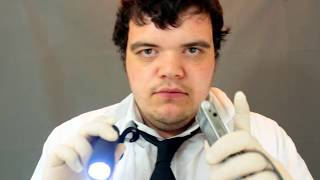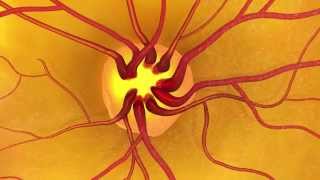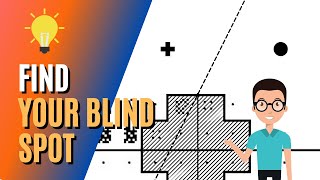Sunday, 28 December, 2025г.
















Где искать: по сайтам Запорожской области, статьи, видео ролики
пример: покупка автомобиля в Запорожье
Examinarea fundului de ochi
Doctorul oftalmolog poate detecta semne de glaucom în timpul unui examen al pupilei dilatate numit și examinarea fundului de ochi.
Pacientului i se administrează picături speciale pentru dilatarea pupilei.
Pupila se dilată larg făcând posibilă examinarea fundului de ochi.
Când pupila este dilatată doctorul oftalmolog poate vedea clar retina, nervul optic și macula.
Pentru a detecta prematur semnele de glaucom doctorul examinează nervul optic.
Nervul optic al acestui pacient este sănătos
Dar așa va arăta un nerv optic cu semne de glaucom
Doctorul va vedea schimbări în forma sau culoarea nervului optic și va observa așa numita escavare a discului optic.
Glaucomul este cel mai intalnit la afro-americanii de peste 40 de ani, la persoanele de peste 60 de ani și la pacienți cu antecedente în familie cu glaucom.
English
The ophthalmologist may detect signs of glaucoma during a dilatated pupil examination called eye exam.
The patient is given special drops for pupil dilation.
The pupil dilated extensively, making it possible to examine the bottom of the eye.
When the pupil is dilated, the ophthalmologist can clearly see the retina, the optic nerve and the macula.
To detect premature signs of glaucoma, the doctor examines the optic nerve.
The doctor will see changes in the shape or color of the optic nerve and will notice the so-called cupping of the optic disk.
Glaucoma is most common in African Americans for over 40 years, in people over 60, and in patients with a history of glaucoma.
Afla mai multe
https://vitreum.ro/glaucom/
Теги:
glaucoma glaucom eye exam optic nerve exam dilatated pupil oftalmology eye animation eye examination
Похожие видео
Мой аккаунт


 У вашего броузера проблема в совместимости с HTML5
У вашего броузера проблема в совместимости с HTML5


